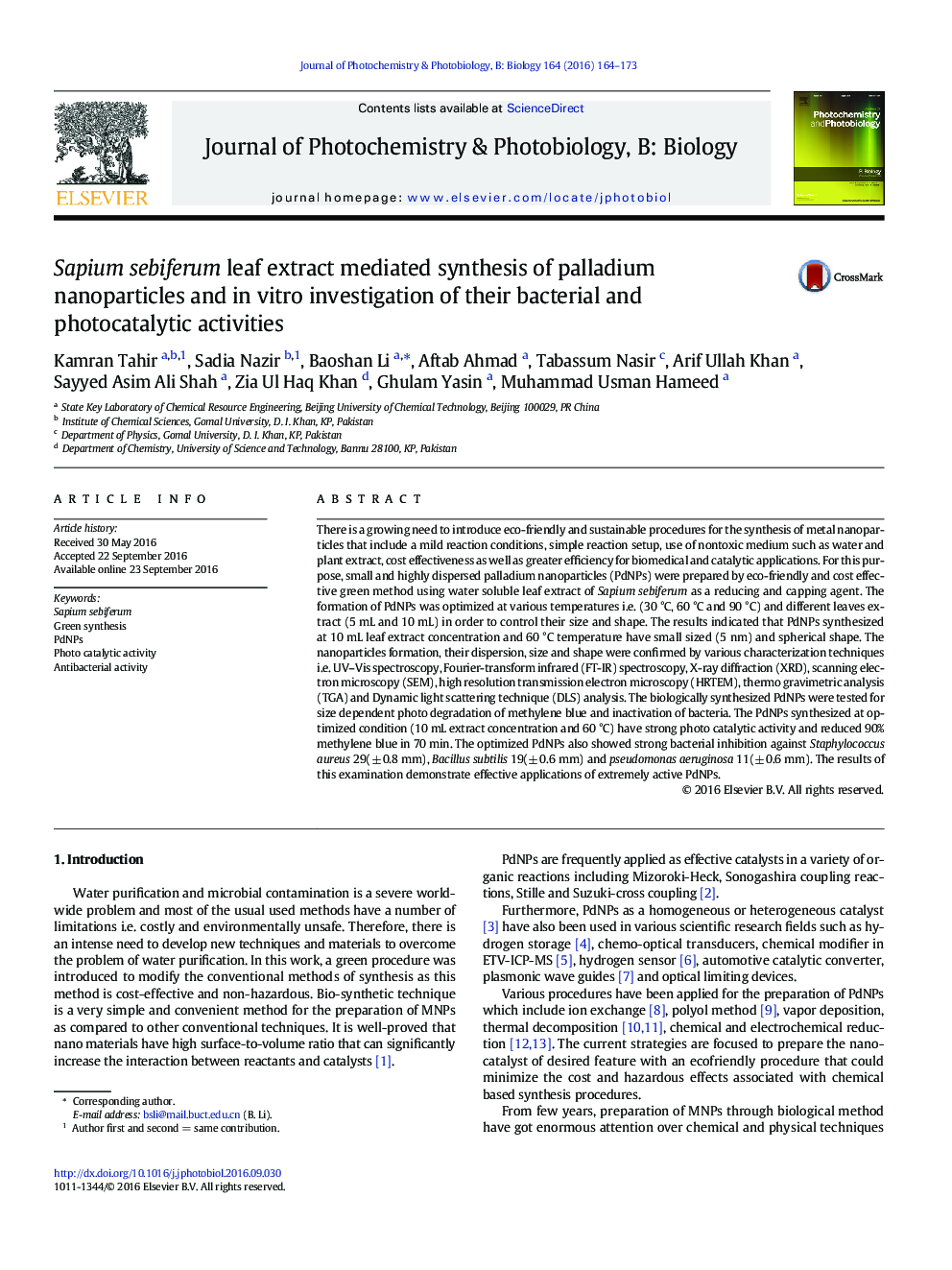| Article ID | Journal | Published Year | Pages | File Type |
|---|---|---|---|---|
| 4754614 | Journal of Photochemistry and Photobiology B: Biology | 2016 | 10 Pages |
â¢Green synthesis of PdNPs is using Sapium sebiferum leaf extract.â¢The synthesized PdNPs were well dispersed, small size and spherical in shape.â¢Investigation of temperature, extract concentration on the size and shape of PdNPsâ¢The PdNPs were screened for inactivation of bacteria.â¢The PdNPs were also evaluated for photo degradation of methylene blue.
There is a growing need to introduce eco-friendly and sustainable procedures for the synthesis of metal nanoparticles that include a mild reaction conditions, simple reaction setup, use of nontoxic medium such as water and plant extract, cost effectiveness as well as greater efficiency for biomedical and catalytic applications. For this purpose, small and highly dispersed palladium nanoparticles (PdNPs) were prepared by eco-friendly and cost effective green method using water soluble leaf extract of Sapium sebiferum as a reducing and capping agent. The formation of PdNPs was optimized at various temperatures i.e. (30 °C, 60 °C and 90 °C) and different leaves extract (5 mL and 10 mL) in order to control their size and shape. The results indicated that PdNPs synthesized at 10 mL leaf extract concentration and 60 °C temperature have small sized (5 nm) and spherical shape. The nanoparticles formation, their dispersion, size and shape were confirmed by various characterization techniques i.e. UV-Vis spectroscopy, Fourier-transform infrared (FT-IR) spectroscopy, X-ray diffraction (XRD), scanning electron microscopy (SEM), high resolution transmission electron microscopy (HRTEM), thermo gravimetric analysis (TGA) and Dynamic light scattering technique (DLS) analysis. The biologically synthesized PdNPs were tested for size dependent photo degradation of methylene blue and inactivation of bacteria. The PdNPs synthesized at optimized condition (10 mL extract concentration and 60 °C) have strong photo catalytic activity and reduced 90% methylene blue in 70 min. The optimized PdNPs also showed strong bacterial inhibition against Staphylococcus aureus 29(± 0.8 mm), Bacillus subtilis 19(± 0.6 mm) and pseudomonas aeruginosa 11(± 0.6 mm). The results of this examination demonstrate effective applications of extremely active PdNPs.
Graphical AbstractGreen synthesis of palladium nanoparticles and their catalytic and biological applications.Download full-size image
